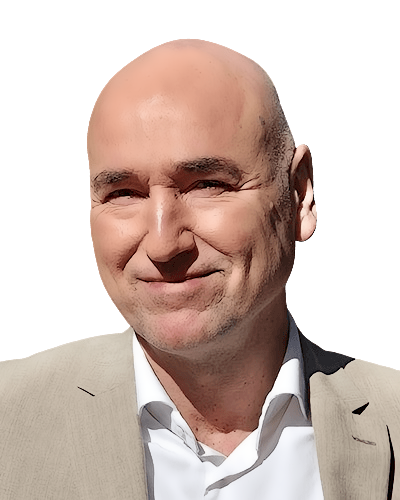Saving lives with BI & Analytics
“Life-saving BI”, some Dutch magazines called it. “A smart logistical solution made insightful with a dashboard”, Martin Smeekes (director of ambulance care) and Anouk Schoemaker (business and BI manager) humbly describe it. However you call it, the “Call to Balloon” project earned the Safety Region North-Holland North the predicate of Smartest Organization in the Netherlands (2015). And, more importantly, 20 minutes of crucial time for patients with immediate cardiac issues that need angioplasty. Those precious minutes can mean the difference between life and death.
Time is muscle
Smeekes: “North-Holland North is a region with a lot of distance, and thus long drive times for ambulances from the periphery to one of the three hospitals (Alkmaar, Hoorn, and Den Helder). Compounding that, we’re surrounded by water: on three sides we’re missing a neighboring region from where we can get support from other ambulance regions. In short, we have to solve our own problems here.” Such was the issue they were faced with in 2012: How to reduce the time between an emergency call about heart issues and the intervention in the hospital (angioplasty).
Time is muscle, as cardiologists say. The longer the heart is denied oxygen-rich blood, the greater the damage to the heart. The survival chance is reduced, as is the quality of life of the surviving patient.
Business Intelligence training course
Passionned Group offers a comprehensive Business Intelligence masterclass. This practical Business Intelligence training course (Dutch) covers KPIs, analytics, BI Project Management, Big Data, change management, data visualization, BI success factors, and more. We’ll prepare you for a leading and advisory role in BI projects.
From Call to Balloon
Smeekes: “We started mapping the process and tracking the time. What’s required for every step, starting from the moment of the emergency call to the life-saving intervention, and where can we gain how much time? From Call to Balloon, instead of (hospital) Door to Balloon, as was the case. What can be gained before the patient even enters the hospital? How can we better connect the separate links in the chain of the process? Because the phone center, ambulance service, and emergency care/hospital were separate entities: everyone was focused on their own department. Our integral approach is essentially new.”
Saving time through analyses
For the project, a dashboard was developed which gave all involved parties detailed insight into what cost time and what wastes time: drive times, hand-off, et cetera. We’re talking about 120 to 180 cases per year. Data analysis revealed several time-saving changes in the process. Schoemaker: “These kinds of small changes are easily missed if you don’t map the process.”
For example, now ambulances take off the moment the call comes in, and not after the phone center has determined whether or not it’s necessary; driving back is always possible. At the patient’s home, a cardiogram is made and sent digitally to the hospital. That way, the hospital immediately knows if angioplasty is required, and the team is ready the moment the ambulance arrives. The patient can go straight from the ambulance to the angioplasty room without delay in the often busy emergency room.
Working on a solution
“All together, that saved an average of 20 minutes per patient. An enormous improvement using relatively simple measures and at low costs (10.000 euros for the development of the dashboard). Thanks to this success, this method is taking off across the country. There are regions where the geographic circumstances are much more advantageous than in North-Holland North, but where the average of 80 minutes from Call to Balloon isn’t met. More importantly, such a completely transparent process makes it possible to detect the exceptions to that average and thus work on solutions.”
New project stroke treatment
The region has undertaken a new project in stroke treatment that takes full advantage of all the experience gained in cardiology. That was a fairly top-down process, but in neurology, several relevant parties are involved from the jump. Smeekes: “We’re talking to thirty people: people from the call center, paramedics, SEH doctors, neurologists, ICT people, et cetera. All ambassadors for a major change. A special combination that works exceptionally well.”
No more missing the forest for the trees
“The fact that we’re all at the table together means we see insights that you’d otherwise miss: this way we avoid missing the forest for the trees and we can see each others’ blind spots. Everyone takes part in the discussion and everyone’s contribution – from neurologist, to nurse, to phone operator – is equally valuable. This creates a real connection and generates a lot of energy.” Schoemaker: “The dashboard is, again, a perfect aid: it generates immediate feedback on the entire process of emergency care, thanks to all the indicators you can track. Medical specialists – not happy with everything they have to record normally – see huge advantages here: these are the hardest quality indicators, and those have to be recorded. Every second of improvement counts.”
Determine solidification value early
Martin Smeekes has a concrete example from the neurology project. In the three hospitals in North-Holland North, it turns out that after the arrival of a patient with a stroke, time is lost. This information was revealed by the dashboard. So what happened here? After making the CT scan, the coagulation of the blood has to be determined before a strong coagulating agent can be administered. The lab technician often has to come from a different hospital department, which takes time. Since June 1st, 2017, the coagulating value of the blood is determined by the paramedic at the patient’s home, saving time in the process in the hospital.
Seeing, talking to, and understanding each other
Schoemaker: “Seeing, talking to, and understanding each other is really what it’s all about in these improvement processes. The dashboard is an important aid – it provides insight into all the information we record. But the actual work – optimizing the process – is done by people who work together. People with a drive to improve, who trust each other in this (for example making a cardiogram, or determining blood values in the ambulance), who are prepared to give and receive feedback, who dare to let go. Those people together comprise the intelligent organization.



